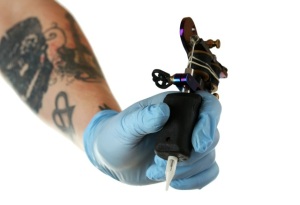Tattoos can look like cancer on a PET/CT image
por
Lauren Dubinsky, Senior Reporter | June 15, 2015

Tattoo ink can appear as cancer that spread to the lymph nodes on a PET/CT image and result in unnecessary surgery, according to a University of California, Irvine case report. This happened in the case of a 32-year-old woman with 14 tattoos covering her legs.
"The take home message of the manuscript is education and awareness, so that physicians, and patients are aware that in the presence of tattoo/body art, an FDG avid lesion on PET may be due to tattoo ink," Dr. Ramez N. Eskander, one of the authors and assistant clinical professor in the university's department of obstetrics and gynecology, told DOTmed News.
The woman was originally seen in November 2012 when she was diagnosed with cervical cancer. A preoperative PET/CT scan showed that the cancer spread to her left and right ileac lymph nodes, according to the report.
She underwent a hysterectomy, salpingectomy and regional lymph node dissection and by the end of surgery, a total of 40 lymph nodes were removed. But when the pathologists examined the tissue they only found tattoo ink — no malignant cells.
PET/CT is increasingly used to evaluate for metastatic disease in patients with locally advanced cancer. A meta-analysis of 41 studies conducted in 2007 found that PET had the highest sensitivity and specificity for detecting positive nodes when compared with CT or MRI alone.
In November 2005, CMS approved PET/CT imaging for initial staging of patients with cervical cancer. But despite that, there is still the potential for false-positive results that can lead to unnecessary surgery or a delay in necessary treatment.
The authors of the report mentioned that performing a minimally-invasive percutaneous biopsy to confirm the disease may be a solution, but that “technical limitations” might prevent that. Another solution may be surgical staging, instead of clinical staging, but that comes with potentially life-threatening risks.
In recent years, tattoos have become more popular — in 2013, 21 percent of adults reported at least one tattoo, which was a 7 percent increase from 2003. Tattoo pigment migration to regional lymph nodes in patients with breast cancer, melanoma, testicular seminoma and vulvar squamous cell carcinoma has been documented in literature before.
The authors wrote that physicians need to be aware of the possible effects of tattoo ink on PET/CT findings and also counsel patients and create an appropriate treatment program.
|
|
|
You Must Be Logged In To Post A Comment
|
